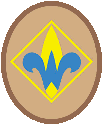
Webelos Adventure Requirements
Required: Bobcat , Webelos Walkabout, Stronger, Faster, Higher, My Community, My Safety, My Family
Electives: Aquanaut, Art Explosion, Aware and Care, Build It, Catch the Big One, Champions for Nature, Chef's Knife, Earth Rocks!, Let's Camp, Math on the Trail, Modular Design, Paddle Onward, Pedal Away, Race Time, Summertime Fun, Tech on the Trail, Yo-Yo
Retired Electives: Adventures in Science, Build My Own Hero, Fix It, Looking Back, Looking Forward, Maestro!, Moviemaking, Project Family, Cast Iron Chef, Duty to God and You, First Responder, Castaway, Engineer, Game Design, Into the Wild, Into the Woods, Sports
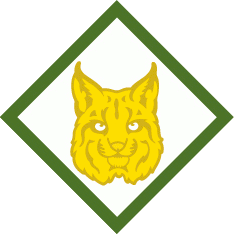
Bobcat
- Get to know members of your den.
- Recite the Scout Oath and the Scout Law with your den and den leader. Describe 3 points of the Scout Oath.
- Learn about the Scout Law.
- Learn about the denner position and responsibilities.
- With your den create a den Code of Conduct.
- Demonstrate the Cub Scout sign, Cub Scout salute and Cub Scout handshake. Show how each is used.
- At home, with your parent or legal guardian do the activities in the booklet How to Protect Your Children From Child Abuse: A Parent's Guide
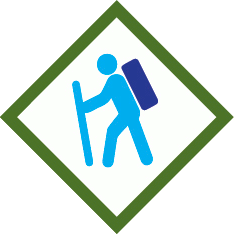
Webelos Walkabout
- Prepare for a 2-mile walk outside. Gather your Cub Scout Six Essentials and weather appropriate clothing and shoes.
- Plan a 2-mile route for your walk.
- Check the weather forecast for the time of your planned 2-mile walk.
- Review the four points of BSA SAFE Checklist and how you will apply them on your 2-mile walk.
- Demonstrate first aid for each of the following events that could occur on your 2-mile walk.
- Blister
- Sprained ankle
- Sun burn
- Dehydration and heat related illness
- With your den, pack, or family, go on your 2-mile walk while practicing the Leave No Trace Principles for Kids and Outdoor Code.
- After your 2-mile walk, discuss with your den what went well and what you would do differently next time.
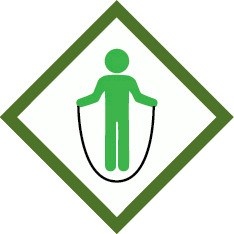
Stronger, Faster, Higher
- With your den or family, plan, cook, and eat a balanced meal.
- Be active for 30 minutes with your den or at least one other person that includes both stretching and moving.
- Be active for 15 minutes doing personal exercises that boost your heart rate, use your muscles, and work on flexibility.
- Do a relaxing activity for 10 minutes.
- Review your Annual Health and Medical Record with your parent or legal guardian. Discuss your ability to participate in den and pack activities.
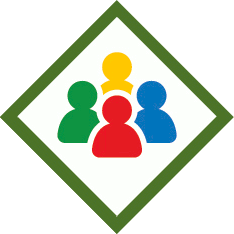
My Community
- Learn about majority and plurality types of voting.
- Speak with someone who is elected to their position. Discover the type of voting that was used to elect them and why.
- Choose a federal law and create a timeline of the history of the law. Include the involvement of the three branches of government.
- Participate in a service project.
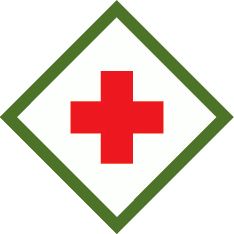
My Safety
- With permission from your parent or legal guardian, watch the Protect Yourself Rules video for the Webelos rank.
- Identify items in your house that are hazardous and make sure they are stored properly. Identify where on the package it describes what to do if someone is accidentally exposed to the product.
- Identify ways you and your family keep your home or your meeting space safe.
- Complete a "Be Prepared for Natural Events" worksheet for at least two natural events most likely to happen near where you live.
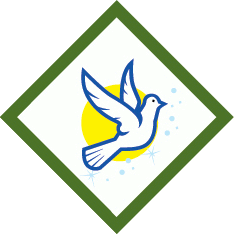
My Family
- With your parent or legal guardian, talk about your family's faith traditions. Identify three holidays or celebrations that are part of your family's faith traditions. Make a craft, work of art, or a food item that is part of your family's faith tradition holiday or celebration.
- Carry out an act of kindness.
- With your parent or legal guardian identify a religion or faith that is different from your own. Identify two things that it has in common with your family's beliefs.
- Discuss with our parent or legal guardian what it means to be reverent. Tell how you practice being reverent in your daily life.
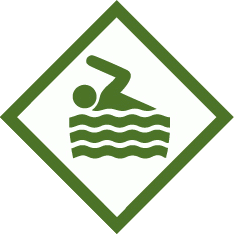
Aquanaut
- State the safety precautions you need to take before doing any swimming activity.
- Explain the meaning of "order of rescue" and demonstrate the reach and throw rescue techniques from land.
- Learn how to prevent and treat hypothermia.
- Attempt to tread water.
- Attempt the Scouting America swimmer test.
- Have 30 minutes, or more, of free swim time where you practice the buddy system and stay within your ability group. The qualified adult supervision should conduct at least three buddy checks per half hour swimming.
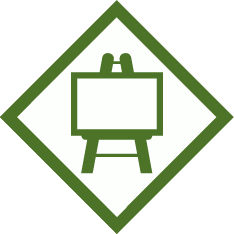
Art Explosion
- Create a piece of art by exploring drawing techniques using pencils.
- Using a digital image, explore the effect of filters by changing an image using different editing or in-camera techniques.
- Create a piece of art using paint as your medium.
- Create a piece of art combining at least two media.
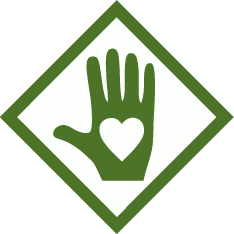
Aware and Care
- Do an activity that shows the challenges of being visually impaired.
- Do an activity that shows the challenges of being hearing impaired.
- Explore barriers to access.
- Meet someone who has a disability or someone who works with people with disabilities about what obstacles they have to overcome and how they do it.
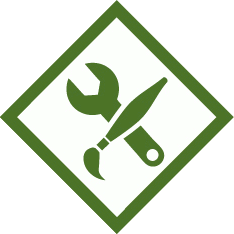
Build It
- Learn about some basic tools and the proper use of each tool. Learn about and understand the need for safety when you work with tools.
- Demonstrate how to check for plumb, level, and square when building.
- With the guidance of your Webelos den leader, parent, or legal guardian, select a carpentry project that requires it to be either plumb, level, and/or square. Create a list of materials and tools you will need to complete the project.
- Build your carpentry project.
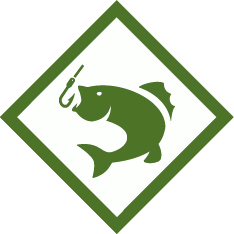
Catch the Big One
- Make a plan to go fishing. Determine where you will go and what type of fish you plan to catch. All of the following requirements are to be completed based on your choice.
- Use the BSA SAFE Checklist to plan what you need for your fishing experience.
- Describe the environment where the fish might be found.
- Make a list of the equipment and materials you will need to fish.
- Determine the best type of knot to tie your hook to your line and tie it.
- Choose the appropriate type of fishing rod and tackle you will be using. Have an adult review your gear.
- Using what you have learned about fish and fishing equipment, spend at least one hour fishing following local guidelines and regulations.

Champions for Nature
- Explore the four components that make up a habitat: food, water, shelter, space.
- Pick an animal that is currently threatened or endangered to complete requirements 3, 4, and 5.
- Identify the characteristics that classify an animal as a threatened or endangered species.
- Explore what caused this animal to be threatened or endangered.
- Research what is currently being done to protect the animal.
- Participate in a conservation service project
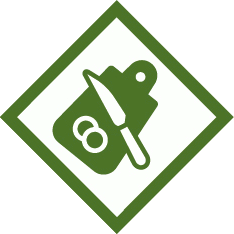
Chef's Knife
- Read, understand, and promise to follow the "Cub Scout Knife Safety Rules."
- Demonstrate the knife safety circle.
- Demonstrate that you know how to care for and use a kitchen knife safely.
- Choose the correct cooking knife and demonstrate how to properly slice, dice, and mince.
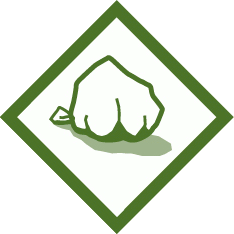
Earth Rocks!
- Examine the three types of rocks, sedimentary, igneous, and metamorphic.
- Find a rock, safely break it apart and examine it.
- Make a mineral test kit and test minerals according to the Mohs scale of mineral hardness.
Using the rock cycle chart or one like it, discuss how hardness determines which materials can be used in homes, in landscapes, or for recreation. - Grow a crystal.
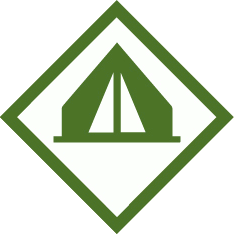
Let's Camp
- With your den, pack, or family, plan and participate in a campout.
- Upon arrival at the campground, determine where to set up a tent.
- Set up your tent without help from an adult.
- Identify a potential weather hazard that could occur in your area. Determine the action you will take if you experience the weather hazard during the campout.
- Show how to tie a bowline. Explain when this knot should be used and why.
- Know the fire safety rules. Using those rules, locate a safe area to build a campfire.
- Using tinder, kindling, and fuel wood, properly build a teepee fire lay. If circumstances permit, and there is no local restriction on fires, show how to safely light the fire while under adult supervision. After allowing the fire to burn safely, extinguish the flames with minimal impact to the fire site.
- Recite the Outdoor Code and Leave No Trace Principles for Kids from memory.
- After your campout, share the things you did to follow the Outdoor Code and Leave No Trace Principles for Kids with your den or family.
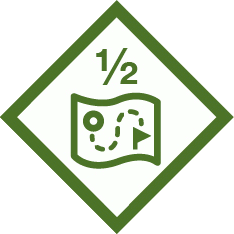
Math on the Trail
- Determine your walking pace by walking 1/4 mile. Make a projection on how long it would take you to walk 2 miles.
- Walk 2 miles and record the time it took you to complete the two miles.
- Make a projection on how long it would take you to hike a 20-mile trail over two days. List all the factors to consider for your projection.
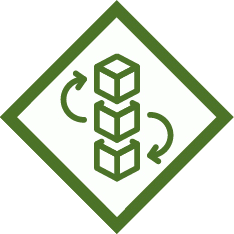
Modular Design
- . Learn what modular design is and identify three things that use modular design in their construction.
- Using modular-based building pieces, build a model without a set of instructions.
- Using the model made in requirement 2, create a set of step-by-step instructions on how to make your model.
- Have someone make your model using your instructions.
- Using the same modular pieces used in requirement 2, build another model of something different.
- With your parent or legal guardian's permission, watch a video demonstrating how something was built using modular design.

Paddle Onward
- . Before attempting requirements 5, 6, 7, 8 and 9 for this Adventure, you must pass the Scouting America swimmer test.
- Pick a paddle craft for which to complete all requirements: canoe, kayak, or stand-up paddleboard.
- Review Safety Afloat.
- Demonstrate how to choose and properly wear a life jacket that is the correct size.
- Jump feet first into water over your head while wearing a life jacket. Then swim 25 feet wearing the life jacket.
- Demonstrate how to enter and exit a canoe, kayak, or stand-up paddleboard safely.
- Discuss what to do if your canoe or kayak tips over or you fall off your stand-up paddleboard.
- Learn how to pick a paddle that is the right size for you. Explore how the paddle craft responds to moving the paddle.
- Have 30 minutes, or more, of canoe, kayak, or stand-up paddleboard paddle time.
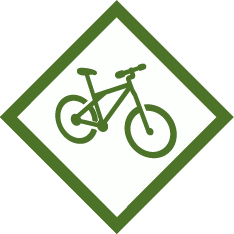
Pedal Away
- Decide on gear and supplies you should bring for a long bike ride. Determine how to safely carry the gear.
- Discover how multi-gear bicycles work and how they benefit a rider.
- Practice how to lubricate a chain.
- Pick a bicycle lock that you will use. Demonstrate how it locks and unlocks, how it secures your bicycle, and how you carry it while you are riding your bicycle.
- With your family, den, or pack, use a map and plan a bicycle ride that is at least 5 miles.
- With your den, pack, or family and using the buddy system, go on a bicycle ride that is a minimum of 5 miles.

Race Time
- With an adult, build either a Pinewood Derby and car or a Raingutter Regatta boat.
- Learn the rules of the race for the vehicle chosen in requirement 1.
- Explore the properties of friction and how it impacts your chosen vehicle.
- Before the race, discuss with your den how you will demonstrate good sportsmanship during the race.
- Participate in a Pinewood Derby or a Raingutter Regatta.

Summertime Fun
- Anytime during May through August participate in a total of three Cub Scout activities.
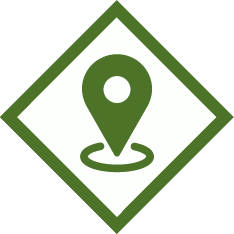
Tech on the Trail
- Discuss how technology can help keep you safe in the outdoors.
- Explore Global Positioning System (GPS) devices and how to use them.
- With an adult, choose an online mapping program tool and plan a 2-mile trek.
- Take your 2-mile trek.
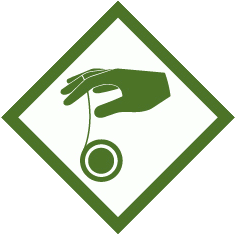
Yo-Yo
- Learn the safety rules of using a yo-yo and always follow them.
- Discover how to find the proper yo-yo string length for you.
- Explain why it is important to have the correct string length and to be in the right location before throwing a yo-yo.
- Demonstrate how to properly string a yo-yo and how to create a slip knot.
- Conduct the pendulum experiment with a yo-yo. Explain what happens to the yo-yo when the string is longer.
- Show that you can properly wind a yo-yo.
- Attempt each of the following: gravity pull, sleeper, breakaway.
Retired Electives
These electives can no longer be earned.

(Retired) Adventures in Science
Complete Requirements 1-3.
- An experiment is a "fair test" to compare possible explanations. Draw a picture of a fair test that shows what you need to do to test a fertilizer's effects on plant growth.
- Visit a museum, a college, a laboratory, an observatory, a zoo, an aquarium, or other facility that employs scientists. Prepare three questions ahead of time, and talk to a scientist about his or her work.
- Complete any four of the following:
- Carry out the experiment you designed for Requirement 1.
- If you completed 3a, carry out the experiment again but change the independent variable. Report what you learned about how changing the variable affected plant growth.
- Build a model solar system. Chart the distances between the planets so that the model is to scale. Use what you learned from this requirement to explain the value of making a model in science.
- With adult supervision, build and launch a model rocket. Use the rocket to design a fair test to answer a question about force or motion.
- Create two circuits of three light bulbs and a battery. Construct one as a series circuit and the other as a parallel circuit.
- Study the night sky. Sketch the appearance of the North Star (Polaris) and the Big Dipper (part of the Ursa Major constellation) over at least six hours (which may be spread over several nights). Describe what you observed, and explain the meaning of your observations.
- With adult assistance, explore safe chemical reactions with household materials. Using two substances, observe what happens when the amounts of the reactants are increased.
- Explore properties of motion on a playground. How does the weight of a person affect how fast they slide down a slide or how fast a swing moves? Design a fair test to answer one of those questions.
- Read a biography of a scientist. Tell your den leader or the other members of your den what the scientist is famous for and why his or her work is important.
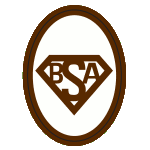
(Retired) Build My Own Hero
Complete Requirements 1-3 plus at least one other.
- Discover what it means to be a hero. Invite a local hero to meet with your den.
- Describe how citizens can be heroes in their communities.
- Recognize a hero in your community by presenting him or her with a "My Hero Award."
- Learn about a real-life hero from another part of the world who has helped make the world a better place.
- Learn about a Scout hero.
- Create your own superhero.
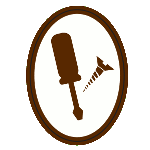
(Retired) Fix It
Complete Requirements 1-4.
- Put a Fix It Tool Box together. Describe what each item in your toolbox can be used for. Show how to use three of the tools safely.
- Be Ready. With the help of an adult in your family, do the following:
- Locate the electrical panel in your home. Determine if the electrical panel has fuses or breakers.
- Determine what heat source is used to heat your home.
- Learn what you would do to shut off the water for a sink, a toilet, a washing machine, or a water heater. If there is a main shut-off valve for your home, show where it is located.
- Describe to your Webelos den leader how to fix or make safe the following circumstances with help from an adult:
- A toilet is overflowing.
- The kitchen sink is clogged.
- A circuit breaker tripped, causing some of the lights to go out.
- Let's Fix It. Select and do eight of the following. You will need an adult's supervision for each of these Fix It projects:
- Show how to change a light bulb in a lamp or fixture. Determine the type of light bulb and how to properly dispose of it.
- Fix a squeaky door or cabinet hinge.
- Tighten a loose handle or knob on a cabinet or a piece of furniture.
- Demonstrate how to stop a toilet from running.
- Replace a furnace filter.
- Wash a car.
- Check the oil level and tire pressure in a car.
- Show how to replace a bulb in a taillight, turn signal, or parking light, or replace a headlight in a car.
- Help an adult change a tire on a car.
- Make a repair to a bicycle, such as adjusting or lubricating the chain, inflating the tires, fixing a flat, or adjusting the seat or handlebars.
- Replace the wheels on a skateboard, a scooter, or a pair of inline skates.
- Help an adult prepare and paint a room.
- Help an adult replace or repair a wall or floor tile.
- Help an adult install or repair a window or door lock.
- Help an adult fix a slow or clogged sink drain.
- Help an adult install or repair a mailbox.
- Change the battery in a smoke detector or a carbon monoxide detector, and test its operation.
- Help an adult fix a leaky faucet.
- Find wall studs, and help an adult hang a curtain rod or a picture.
- Take an old item, such as a small piece of furniture, a broken toy, or a picture frame, and rebuild and/or refinish it. Show your work to your Webelos leader or another adult.
- Do a Fix It project agreed upon with your parent or guardian.

(Retired) Looking Back, Looking Forward
Complete all Requirements.
- Create a record of the history of Scouting and your place in that history.
- With the help of your den leader, parent, or guardian and with your choice of media, go on a virtual journey to the past and create a timeline.
- Create your own time capsule.

(Retired) Maestro!
Complete Requirements 1 and 2.
- Do a or b:
- Attend a live musical performance.
- Visit a facility that uses a sound mixer, and learn how it is used.
- Do two of the following:
- Make a musical instrument. Play it for your family, den, or pack.
- Form a "band" with your den. Each member creates his own homemade musical instrument. Perform for your pack at a pack meeting.
- Play two tunes on any band or orchestra instrument.
- Teach your den the words and melody of a song. Perform the song with your den at your den or pack meeting.
- Create original words for a song. Perform it at your den or pack meeting.
- Collaborate with your den to compose a den theme song. Perform it at your pack meeting.
- Write a song with words and music that expresses your feelings about an issue, a person, something you are learning, a point of the Scout Law, etc. Perform it at your den or pack meeting, alone or with a group.
- Perform a musical number by yourself or with your Webelos den in front of an audience.

(Retired) Moviemaking
Complete all Requirements.
- Write a story outline describing a real or imaginary Scouting adventure. Create a pictured storyboard that shows your story.
- Create either an animated or live action movie about yourself. Your movie should depict how you live by the Scout Oath and Law.
- Share your movie with your family, den, or pack.

(Retired) Project Family
Complete the following Requirements.
- Interview a grandparent, another family elder, or a family friend about what life was like when he or she was growing up.
- With members of your family or a family friend, discuss some of your family names, history, traditions, and culture.
Do one of the following:
- Create a family tree of three generations.
- Make a poster or Web page that shows the places that some of your family members came from.
- Choose a special celebration or holiday that some of your family members participate in, and create either a poster, picture, or photo slideshow of it.
- Show your understanding of your duty to family by creating a chart listing the jobs that you and other family members have at home. Choose three of the jobs you are responsible for, and chart them for two weeks.
- Select a job that belongs to another family member, and help that person complete it.
Some examples would be to create a grocery shopping list for the week, to take out trash for a week, to do the laundry for your family one time, to prepare meals for your family for one day, or to complete some yard work. - With the help of an adult, inspect your home and its surroundings. Make a list of hazards or security problems you find. Correct one problem you found, and tell what you did.
- Complete one of the following:
- Hold a family meeting to plan an exciting family activity. The activity could include:
- A family reunion
- A family night
- A family outing
- Create a list of community service or conservation projects that you and your family can do together, and present it to your family. Select one project, plan it, and complete it with members of your family.
- Hold a family meeting to plan an exciting family activity. The activity could include:

(Retired) Cast Iron Chef
Complete at least Requirements 1 and 2 below.
- Plan a menu for a balanced meal for your den or family. Determine the budget for the meal. If possible, shop for the items on your menu. Stay within your budget.
- Prepare a balanced meal for your den or family. If possible, use one of these methods for preparation of part of the meal: camp stove, Dutch oven, box oven, solar oven, open campfire, or charcoal grill. Demonstrate an understanding of food safety practices while preparing the meal.
- Use tinder, kindling, and fuel wood to demonstrate how to build a fire in an appropriate outdoor location. If circumstances permit and there is no local restriction on fires, show how to safely light the fire, under the supervision of an adult. After allowing the fire to burn safely, safely extinguish the flames with minimal impact to the fire site.
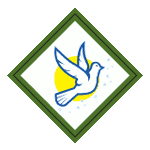
(Retired) Duty to God and You
Complete Requirement 1 and at least two others of your choice.
- Discuss with your parent, guardian, den leader, or other caring adult what it means to do your duty to God. Tell how you do your duty to God in your daily life.
- Earn the religious emblem of your faith that is appropriate for your age, if you have not done so already.
- Discuss with your family, family's faith leader, or other caring adult how planning and participating in a service of worship or reflection helps you live your duty to God.
- List one thing that will bring you closer to doing your duty to God, and practice it for one month. Write down what you will do each day to remind you.

(Retired) First Responder
Complete Requirement 1 and at least five others.
- Explain what first aid is. Tell what you should do after an accident.
- Show what to do for hurry cases of first aid: Serious bleeding, heart attack or sudden cardiac arrest, stopped breathing, stroke, poisoning
- Show how to help a choking victim.
- Show how to treat for shock.
- Demonstrate how to treat at least five of the following: A. Cuts and scratches, B. Burns and scalds, C. Sunburn, D. Blisters on the hand or foot, E. Tick bites, F. Bites and stings of other insects, G. Venomous snakebites, H. Nosebleed, I. Frostbite
- Put together a simple home first-aid kit. Explain what you included and how to use each item correctly.
- Create and practice an emergency readiness plan for your home or den meeting place.
- Visit with a first responder or health care professional.

(Retired) Castaway
Complete Requirements 1 and 2.
- Complete a. and your choice of b. or c.
- On a campout or outdoor activity with your den or family, cook two different recipes that do not require pots and pans.
- With the help of an adult, demonstrate one way to light a fire without using matches.
- Using tree limbs or branches that have already fallen or been cut, build a shelter that will protect you overnight.
- Do all of the following.
- Learn what items should be in an outdoor survival kit that you can carry in a small bag or box in a day pack. Assemble your own small survival kit, and explain to your den leader why the items you chose are important for survival.
- With your den, demonstrate two ways to treat drinking water to remove impurities.
- Discuss what to do if you become lost in the woods. Tell what the letters "S-T-O-P" stand for. Tell what the universal emergency signal is. Describe three ways to signal for help. Demonstrate one of them. Describe what you can do to help rescuers find you.
- Make a list of four qualities you think a leader should have in an emergency and why they are important to have. Pick two of them, and act them out for your den. Describe how each relates to a point of the Scout Law. Describe how working on this adventure gave you a better understanding of the Boy Scout motto.
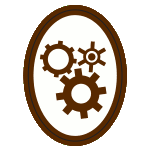
(Retired) Engineer
Complete at least Requirements 1 and 2. Requirements 3 and 4 are optional.
- Pick one type of engineer. With the help of the Internet, your local library, or an engineer, discover three things that describe what that engineer does. (To use the Internet, be sure that you have a current Cyber Chip or that you have permission from your Webelos den leader, parent, or guardian.) Share your findings with your Webelos den.
- Learn to follow engineering design principles by doing the following:
- Examine a set of blueprints or specifications. Using these as a model, construct your own set of blueprints or specifications to design a project.
- Using the blueprints or specifications from your own design, complete your project. Your project may be something useful or something fun.
- Share your project with others at a den or pack meeting.
- Explore other fields of engineering and how they have helped form our past, present, and future.
- Pick and do two projects using the engineering skills you have learned. Share your projects with your den and also exhibit them at a pack meeting.

(Retired) Game Design
Complete all Requirements.
- Decide on the elements for a game.
- List at least five of the online safety rules that you put into practice while using the Internet on your computer or smartphone. Skip this if your Cyber Chip is current.
- Create your game.
- Teach an adult or another Scout how to play your game.
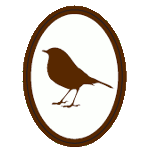
(Retired) Into the Wild
Complete at least six of the following Requirements.
- Collect and care for an "insect, amphibian, or reptile zoo." You might have crickets, ants, grasshoppers, a lizard, or a toad (but be careful not to collect or move endangered species protected by federal or state law). Study them for a while and then let them go. Share your experience with your Webelos den.
- Set up an aquarium or terrarium. Keep it for at least a month. Share your experience with your Webelos den by showing them photos or drawings of your project or by having them visit to see your project.
- Watch for birds in your yard, neighborhood, or area for one week. Identify the birds you see, and write down where and when you saw them.
- Learn about the bird flyways closest to your home. Find out which birds use these flyways.
- Watch at least four wild creatures (reptiles, amphibians, arachnids, fish, insects, or mammals) in the wild. Describe the kind of place (forest, field, marsh, yard, or park) where you saw them. Tell what they were doing.
- Identify an insect, reptile, bird, or other wild animal that is found only in your area of the country. Tell why it survives in your area.
- Give examples of at least two of the following:
- A producer, a consumer, and a decomposer in the food chain of an ecosystem
- One way humans have changed the balance of nature
- How you can help protect the balance of nature
- Learn about aquatic ecosystems and wetlands in your area. Talk with your Webelos den leader or family about the important role aquatic ecosystems and wetlands play in supporting life cycles of wildlife and humans, and list three ways you can help.
- Do ONE of the following:
- Visit a museum of natural history, a nature center, or a zoo with your family, Webelos den, or pack. Tell what you saw.
- Create a video of a wild creature doing something interesting, and share it with your family and den.

(Retired) Into the Woods
Complete at least Requirements 1-4 and one other.
- Identify two different groups of trees and the parts of a tree.
- Identify four trees common to the area where you live. Tell whether they are native to your area. Tell how both wildlife and humans use them.
- Identify four plants common to the area where you live. Tell which animals use them and for what purpose.
- Develop a plan to care for and then plant at least one plant or tree, either indoors in a pot or outdoors. Tell how this plant or tree helps the environment in which it is planted and what the plant or tree will be used for.
- Make a list of items in your home that are made from wood and share it with your den. OR: With your den, take a walk and identify useful things made from wood.
- Explain how the growth rings of a tree trunk tell its life story. Describe different types of tree bark and explain what the bark does for the tree.
- Visit a nature center, nursery, tree farm, or park, and speak with someone knowledgeable about trees and plants that are native to your area. Explain how plants and trees are important to our ecosystem and how they improve our environment.

(Retired) Sports
Complete all Requirements.
- Show the signals used by officials in one of these sports: football, basketball, baseball, soccer, or hockey.
- Participate in two sports, either as an individual or part of a team.
- Complete the following requirements:
- Explain what good sportsmanship means.
- Role-play a situation that demonstrates good sportsmanship.
- Give an example of a time when you experienced or saw someone showing good sportsmanship.
Find more 2025 Scouting Resources at www.BoyScoutTrail.com
More Webelos Scout Information to Use in 2025:
Webelos Core Adventures -
Do six for the Webelos rank
Webelos Elective Adventures -
Do two for the Webelos rank
Webelos Activities - great den meeting ideas
Webelos Scout Awards - see what awards are available to Webelos scouts
Webelos Scout Ceremonies - a few ceremonies
Webelos Scout Games - den or pack games just right for 4th and 5th graders
Webelos Scout Graces - fun meal graces
Webelos Scout Jokes - funny, gross, and silly jokes for scouts
Webelos Scout Projects - community or conservation projects for your Webelos den
Webelos Scout Recipes - tasty food recipes for fun snacks at campfires or on overnights
Webelos Scout Skits - skits that Webelos Scouts like to do
Webelos Scout Songs - songs for scouts
Webelos Scout Stories - choose stories that Webelos scouts will enjoy and understand
Webelos Scout Uniform - make sure you put all those badges and patches in the right spots
Webelos Scout Tests - online tests for Webelos Scouts to test their knowledge in 2025
Scouting 2025 - Ask a Question - Add Content
Just for Fun: Socializing merit badge




Find more Scouting Resources at www.BoyScoutTrail.com



Follow Me, Scouts
Recent Comments